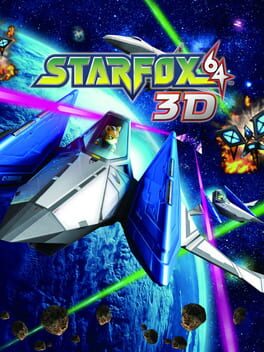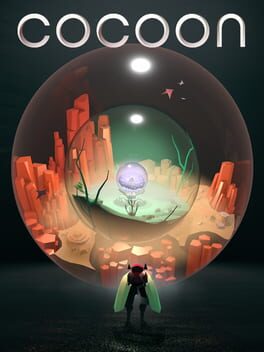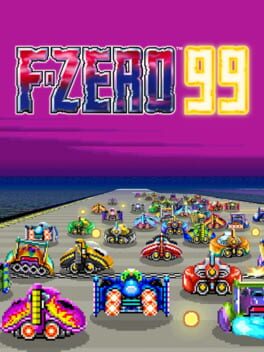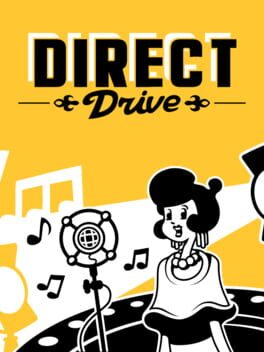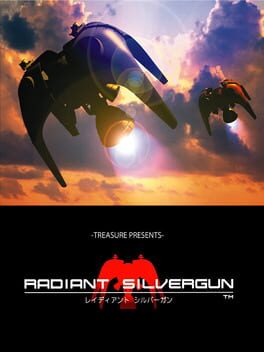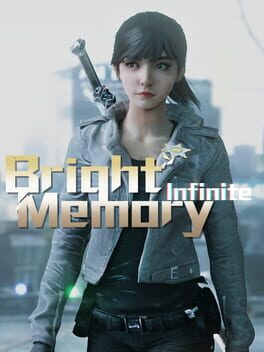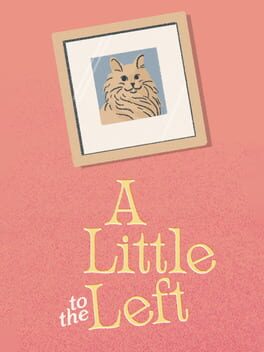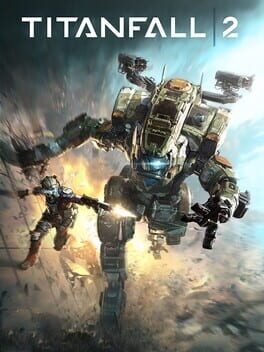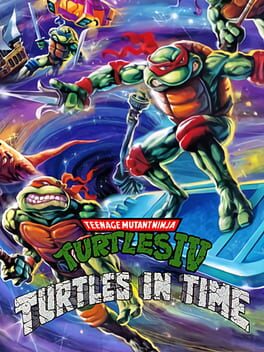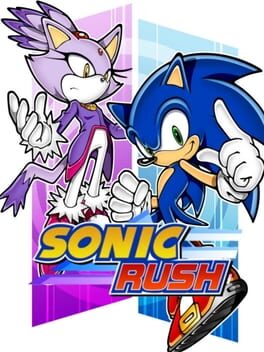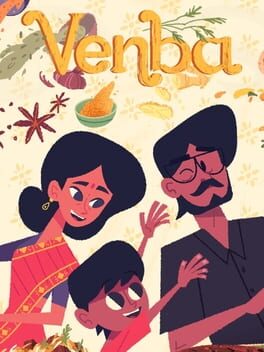AbramBuehner
2011
Star Fox 64 is my favorite game and 64 3D is where I came to truly know it back in 2011. For a long time, it was the de facto way for me to enjoy the adventure, but I have since come to prefer the N64 original. Its sense of scale, by merit of being up on the TV, is pretty much unmatched. Really a matter of personal preference, but my last 5+ replays of 64 were on the OG version.
This was my first time playing through 3D in several years now, and it just as slick as I remembered. There's little doubt in my mind that this is the definitive version and the one that I'd recommend to newcomers, I also really enjoy the depth of field 3D implementation as well as the pilot convos moving to the bottom screen. Really keeps the action clear.
I still do prefer setting myself up on the TV, playing 64 through NSO with the N64 controller. But I also really like the lo-fi 90s look of the game. That said, 3D CERTAINLY controls a hell of a lot better than 64 does when played portably on Switch, so I see this as the definitive handheld iteration of the game, even post-Switch.
This was my first time playing through 3D in several years now, and it just as slick as I remembered. There's little doubt in my mind that this is the definitive version and the one that I'd recommend to newcomers, I also really enjoy the depth of field 3D implementation as well as the pilot convos moving to the bottom screen. Really keeps the action clear.
I still do prefer setting myself up on the TV, playing 64 through NSO with the N64 controller. But I also really like the lo-fi 90s look of the game. That said, 3D CERTAINLY controls a hell of a lot better than 64 does when played portably on Switch, so I see this as the definitive handheld iteration of the game, even post-Switch.
2023
The most amazing thing about Cocoon's context-less alien world is that everything feels remarkably intuitive. Although the art direction goes out of its way to establish ecology that makes no logical sense to us on the surface, the team is working subconsciously to nudge us forward and allow us to develop a sort of non-verbal understanding of how the landscape reliably operates.
It's largely a function of Cocoon's general simplicity. The game isn't over-encumbered either in its mechanics or puzzle design, everything is pared down to the bare essentials, the same view puzzle types reliably being built upon and stretched across the ~4 hour runtime.
It's an astonishing feat of unconventional design, let down only by a feeling of monotony in the last hour, when the one-speed pace and methodical sequence of moves necessary to complete any given puzzle begin to wear thin. There's really no way around the routine actions of swapping orbs and holding a button press to dive into them, or the inherent need to only have your protagonist carry one orb at a time. But I felt like I had seen all Cocoon had to offer perhaps forty-five minutes prior to its conclusion, which, in such a short game, is perhaps a quarter of the journey.
That said, my foot-tapping desire to see the end by last stint doesn't come anywhere near undermining the design excellence in Cocoon. An extremely impressive, atmospheric jaunt through that couldn't be more foreign, yet paradoxically more understandable.
It's largely a function of Cocoon's general simplicity. The game isn't over-encumbered either in its mechanics or puzzle design, everything is pared down to the bare essentials, the same view puzzle types reliably being built upon and stretched across the ~4 hour runtime.
It's an astonishing feat of unconventional design, let down only by a feeling of monotony in the last hour, when the one-speed pace and methodical sequence of moves necessary to complete any given puzzle begin to wear thin. There's really no way around the routine actions of swapping orbs and holding a button press to dive into them, or the inherent need to only have your protagonist carry one orb at a time. But I felt like I had seen all Cocoon had to offer perhaps forty-five minutes prior to its conclusion, which, in such a short game, is perhaps a quarter of the journey.
That said, my foot-tapping desire to see the end by last stint doesn't come anywhere near undermining the design excellence in Cocoon. An extremely impressive, atmospheric jaunt through that couldn't be more foreign, yet paradoxically more understandable.
2023
In a year of wonderful Nintendo games, F-Zero 99 is perhaps the most surprising. And I don't mean surprise solely in the context of its announcement and revival of F-Zero after a near twenty-year hiatus. F-Zero 99 is surprising in that it's exceptional.
I wouldn't call the other 35/99 games exceptional, their success feels, in part, closer to novelty than anything else. Tetris 99 is a brilliant concept, but there's a routine asynchronicity to the gameplay - everyone's boards set off independently, intertwining only only a predetermined moments. It's interesting, I had a great time with the game, and it laid a unique foundation.
But at a certain point, it, Mario 35, and Pac-Man 99 all circle a similar drain of simply overlaying competitive-lite elements and busy UI onto insulated, solo gameplay loops. By my later hours with Tetris 99, I was really fighting against myself and my own skill ceiling with the junk lines thrown by my opponents being something of a secondary concern.
F-Zero 99 could've been similarly designed with the Tetris 99 philosophy and UI, Grey Bumpers being thrown onto your track by opponents, the track narrowing with each successive lap.
But, it tries something else. F-Zero 99 is exceptional because it synchronously puts you in direct contact with 98 others on track. This is genuine chaos, a twitch bout of kinetic action and reaction as you fly around corners and burn your boost power, each collision on track chipping just a bit more away.
There is a brilliant synthesis of F-Zero's decades-long ethos of aggressive racing and the intrinsic competition of battle royale here. The concept is not only harmonious but the execution is fantastic. Merging mechanics from F-Zero (SNES) and F-Zero X with modern sensibilities, there is a sort of timeless feel to how the game has been crafted. Like NES Remix before it, F-Zero 99 feels out of time in best possible way.
It also feels remarkably complete for being entirely free-to-play. Solid progression systems, illustrated menus, multiple game modes (with more on the way) - in breadth the game well exceeds what I expected from a 99 title as well.
Most critically though, the depth of F-Zero 99 feels bottomless even after my fifteen hours of gameplay. You begin by floundering on track, trying just to finish races. But then you become taken by interlocking systems that don't begin to appear until you're able to just handle yourself and cross the finish line. You start to manage your Golden Sparks and employ strategic usage of the Skyway. You start to identify weak racers and Bumpers to chain KOs. You learn when you hang back and when to surge ahead, saving your boost for the all-out final lap melee. And, given that absolute mania of being repeatedly jostled by dozens of other machines, you're weighing up each aforementioned concept in response to the snap decisions of the racers around you.
Fold all of that into rock-solid netcode alongside a brilliant rival progression system and you're staring down one of the most potent "one more round" experiences in ages. I love F-Zero and I expected to enjoy 99. What I didn't expect was that I'd be entirely captivated by it.
I wouldn't call the other 35/99 games exceptional, their success feels, in part, closer to novelty than anything else. Tetris 99 is a brilliant concept, but there's a routine asynchronicity to the gameplay - everyone's boards set off independently, intertwining only only a predetermined moments. It's interesting, I had a great time with the game, and it laid a unique foundation.
But at a certain point, it, Mario 35, and Pac-Man 99 all circle a similar drain of simply overlaying competitive-lite elements and busy UI onto insulated, solo gameplay loops. By my later hours with Tetris 99, I was really fighting against myself and my own skill ceiling with the junk lines thrown by my opponents being something of a secondary concern.
F-Zero 99 could've been similarly designed with the Tetris 99 philosophy and UI, Grey Bumpers being thrown onto your track by opponents, the track narrowing with each successive lap.
But, it tries something else. F-Zero 99 is exceptional because it synchronously puts you in direct contact with 98 others on track. This is genuine chaos, a twitch bout of kinetic action and reaction as you fly around corners and burn your boost power, each collision on track chipping just a bit more away.
There is a brilliant synthesis of F-Zero's decades-long ethos of aggressive racing and the intrinsic competition of battle royale here. The concept is not only harmonious but the execution is fantastic. Merging mechanics from F-Zero (SNES) and F-Zero X with modern sensibilities, there is a sort of timeless feel to how the game has been crafted. Like NES Remix before it, F-Zero 99 feels out of time in best possible way.
It also feels remarkably complete for being entirely free-to-play. Solid progression systems, illustrated menus, multiple game modes (with more on the way) - in breadth the game well exceeds what I expected from a 99 title as well.
Most critically though, the depth of F-Zero 99 feels bottomless even after my fifteen hours of gameplay. You begin by floundering on track, trying just to finish races. But then you become taken by interlocking systems that don't begin to appear until you're able to just handle yourself and cross the finish line. You start to manage your Golden Sparks and employ strategic usage of the Skyway. You start to identify weak racers and Bumpers to chain KOs. You learn when you hang back and when to surge ahead, saving your boost for the all-out final lap melee. And, given that absolute mania of being repeatedly jostled by dozens of other machines, you're weighing up each aforementioned concept in response to the snap decisions of the racers around you.
Fold all of that into rock-solid netcode alongside a brilliant rival progression system and you're staring down one of the most potent "one more round" experiences in ages. I love F-Zero and I expected to enjoy 99. What I didn't expect was that I'd be entirely captivated by it.
2023
You can't actually "beat" Crash Mole, but I have the second highest score on the leaderboard, so I think I have the authority to speak on the game. To me, it's testament to the fact that great design can be incredibly slight. In essence, this is just a $2 reverse whack-a-mole arcade game. Pop your head out without getting hammered, get a point.
There's not much to Crash Mole, but that allows the game to really focus on nailing its the one thing most essential in a score-chaser, the motivating frustration to push your score higher. There is a deceptively high skill ceiling here, and just the perfect amount of mechanical friction introduced by the Playdate crank.
Absolutely smitten with this one
There's not much to Crash Mole, but that allows the game to really focus on nailing its the one thing most essential in a score-chaser, the motivating frustration to push your score higher. There is a deceptively high skill ceiling here, and just the perfect amount of mechanical friction introduced by the Playdate crank.
Absolutely smitten with this one
The Barkless Doctrine is an incredibly witty journey into the post-apocalypse. Its satire is familiar but well executed, the dialog options it presents largely proving texture over substance. I would've liked to see the branching narrative complicated some (a bit more choose your own adventure than chose your next irreverent reply) but it's well-written and oddly sentimental all the same. Very much reflective of our moment but also more profound in its observation than expected. A great, albeit incredibly short, soundtrack as well. Definitely worth the $6 on Playdate, even if the gameplay execution isn't nearly as compelling as the prose itself.
2023
My first Playdate game! Direct Drive felt like a wonderful first step into the library, encapsulating what the handheld's ethos appears to be from my limited time with it thus far. In its less than one-hour runtime, the game presents a simple and joyous idea that acknowledges its lack of depth and chooses to focus on elegantly presenting a core concept. While it still felt somewhat repetitive (and one particular minigame required me to skip it, I'm still not sure why I was unable to beat the "calibration" mini-game), I was taken by the whimsy, charming presentation, and tactile fun of Direct Drive.
1998
What's most impressive about Treasure's games is how they marry spectacle with variety. Their games are comprised of front-to-back exceptional set pieces that end as quickly as they appear, being replaced by a moment even flashier than the last. A Treasure game never content to say in one place too long.
This is absolutely the case of Radiant Silvergun, whose huge bosses are rendered in such painstaking detail and scale, buttressing each stage with an encounter as tense as the ride to it. More manageable than Ikaruga but challenging no doubt, I really enjoyed my two days grinding story mode. The approach to difficulty here, allowing you to accumulate both power and knowledge between attempts, helps to stem the frustration of being forced to complete the campaign with no continues. Having now done it, I wouldn't have it any other way.
This is absolutely the case of Radiant Silvergun, whose huge bosses are rendered in such painstaking detail and scale, buttressing each stage with an encounter as tense as the ride to it. More manageable than Ikaruga but challenging no doubt, I really enjoyed my two days grinding story mode. The approach to difficulty here, allowing you to accumulate both power and knowledge between attempts, helps to stem the frustration of being forced to complete the campaign with no continues. Having now done it, I wouldn't have it any other way.
Bright Memory: Infinite is such a peculiar game. There's almost a whimsy to its total incoherence - no narrative elements or gameplay motifs make any attempt to explain themselves or appear contiguous. But perhaps the biggest disjunction is between the staggering aesthetic production value and everything that lies beneath.
Made by a solo dev, Bright Memory's visuals are just unimpeachable, but they're a façade that gets you in the door and attempts to obfuscate the poor AI, gameplay balancing, level design, and game feel.
There is a sense of fun and punch to the core gunplay that is elevated by the novel interweaving of melee combat. However it's still tied to a protagonist who feels magnetized to the ground, every inch off the ground feeling like a struggle to achieve.
Maybe the biggest issue with Bright Memory, though, is how it manages to make a two-hour experience feel oppressively repetitive, recycling the same bosses and monster closets ad nauseum.
When you enter the rhythm of its multifaceted action and enjoy the scant few particular set pieces - Bright Memory is a lot of fun. It's just rare that you are given the opportunity to get stuck into that groove. There is something of a B-movie cheese to latch onto in the game's finest moments, but it hardly justifies your playtime.
Made by a solo dev, Bright Memory's visuals are just unimpeachable, but they're a façade that gets you in the door and attempts to obfuscate the poor AI, gameplay balancing, level design, and game feel.
There is a sense of fun and punch to the core gunplay that is elevated by the novel interweaving of melee combat. However it's still tied to a protagonist who feels magnetized to the ground, every inch off the ground feeling like a struggle to achieve.
Maybe the biggest issue with Bright Memory, though, is how it manages to make a two-hour experience feel oppressively repetitive, recycling the same bosses and monster closets ad nauseum.
When you enter the rhythm of its multifaceted action and enjoy the scant few particular set pieces - Bright Memory is a lot of fun. It's just rare that you are given the opportunity to get stuck into that groove. There is something of a B-movie cheese to latch onto in the game's finest moments, but it hardly justifies your playtime.
2022
I have long had my eye on A Little to the Left, but I was sadly left disappointed by my time with it. The game sacrifices a clarity in its puzzles' design language for a sense of variety and the hope that pure intuition is enough to push the player along. And often it is - but often isn't always. The number of puzzles that required me to fumble around not for the solution, but for the objective, left me far more annoyed than energized. And while there are myriad solutions to many of the puzzles, there's usually a degree of uncertainty - yet paradoxically a level of demanding precision - that can frequently erase any sense of satisfaction the game looks to provide.
A Little to the Left's best puzzles are the ones that build on previous ones, but those don't make up for the number of challenges that seem content asking you to do something largely random. Combine this with sometimes finnicky controls and a play space that can often get too cluttered mid-solve, and you have a puzzle experience that just doesn't work for me. The game is beautifully produced, but it's also markedly frustrating. I wish that the game had been as soothing as I expected.
A Little to the Left's best puzzles are the ones that build on previous ones, but those don't make up for the number of challenges that seem content asking you to do something largely random. Combine this with sometimes finnicky controls and a play space that can often get too cluttered mid-solve, and you have a puzzle experience that just doesn't work for me. The game is beautifully produced, but it's also markedly frustrating. I wish that the game had been as soothing as I expected.
1985
In my mission to clean up the last 2D Mario games I've never finished before Wonder (just 2 USA, Lost Levels and Land 1 to go now), I finally cleared SMB. Of course, I've played this game countless times across countless platforms, but I never actually completed 8-4.
The game still plays well and it's impossible to discount how groundbreaking its scale was in 1985. But SMB1 was relegated to the status of blueprint when Super Mario Bros. 3 released on the same platform - and that game remains a masterpiece today. SMB1, by comparison, seems like a napkin sketch.
That's not to discount how masterful its worldbuilding and mechanics are. The Mushroom Kingdom as we know it now still owes its identity almost wholesale to SMB1. That's a sort of visionary level of game design that asserts SMB1 as a critically important game, but nowadays also a largely uninteresting one.
It's hard to poke holes in a game this important and this airtight, but it's likewise difficult to provide a list of reasons why it deserves a revisit over literally any of the games that follow. We will always be indebted to Super Mario Bros., but I think we can pay our respects from afar.
The game still plays well and it's impossible to discount how groundbreaking its scale was in 1985. But SMB1 was relegated to the status of blueprint when Super Mario Bros. 3 released on the same platform - and that game remains a masterpiece today. SMB1, by comparison, seems like a napkin sketch.
That's not to discount how masterful its worldbuilding and mechanics are. The Mushroom Kingdom as we know it now still owes its identity almost wholesale to SMB1. That's a sort of visionary level of game design that asserts SMB1 as a critically important game, but nowadays also a largely uninteresting one.
It's hard to poke holes in a game this important and this airtight, but it's likewise difficult to provide a list of reasons why it deserves a revisit over literally any of the games that follow. We will always be indebted to Super Mario Bros., but I think we can pay our respects from afar.
2004
WarioWare is no doubt one of my favorite Nintendo series, and with the completion of Touched, I am so close to experiencing the entire series. Touched does pretty much everything I expect WarioWare to do. It provides enough zaniness to fill a football stadium, entrances me in the high-speed art of goofiness, and establishes an endlessly-fun well of wacky replayability.
But I feel like Touched's story mode is just not as strong as strongest story modes in the series, bogged down by episodes like Mona's that seem to drag on forever. Bushwacking my way through a nasal cavity on my way to a nose within a nose is a novel conclusion, but I wasn't particularly interested in the adventure to that point.
Where the game really comes alive is in the frantic dimension that the Touch Screen adds to gameplay. Aside from the mic usage (which often feels like a repetitive gimmick), Touched gets so much use out of the DS' two-screen setup and the myriad potential inputs that tapping, rubbing, scratching, sketching, spinning, and slashing (did I miss anything?) provide.
It's hard to go wrong with WarioWare, and this is another very good entry.
But I feel like Touched's story mode is just not as strong as strongest story modes in the series, bogged down by episodes like Mona's that seem to drag on forever. Bushwacking my way through a nasal cavity on my way to a nose within a nose is a novel conclusion, but I wasn't particularly interested in the adventure to that point.
Where the game really comes alive is in the frantic dimension that the Touch Screen adds to gameplay. Aside from the mic usage (which often feels like a repetitive gimmick), Touched gets so much use out of the DS' two-screen setup and the myriad potential inputs that tapping, rubbing, scratching, sketching, spinning, and slashing (did I miss anything?) provide.
It's hard to go wrong with WarioWare, and this is another very good entry.
2016
Titanfall 2's campaign is truly among the most elite contemporary FPS adventures, and I cannot believe EA shoved the game out to die between COD and Battlefield back in 2016.
Perhaps Titanfall's greatest accomplishment is how effortless it seems, I rarely feel empowered by first-person parkour but Respawn nails it here. The game leans into feel, allowing you to pull of parkour stunts that work with you instead of against - unlike a game such as Mirror's Edge wherein fluidity takes time to achieve, Titanfall makes you feel sick as hell from the tutorial area. All rough edges are sanded down, wall runs, clambers, slides are so sticky because Respawn incentivizes fantasy above all. Movement is rarely obstructed - it feels like hard geometry bends to you.
That sense of effortlessness also applies to mission design, which so often throws The Coolest Thing You've Ever Seen at you before quickly pulling it away, introducing A Thing So Cool That You Forget About The Last One in its place. A lesser game would be so preoccupied with its achievements that each idea becomes a centerpiece, opposed to another entry in a rolodex of badassery.
Where my praise ends is where the narrative begins, as I simply had no interest or investment in the tensions between the IMC and the Militia. BT is a very fun character, but all he has to bounce his calculated charisma off of is Jack "boring military guy" Cooper, so even that dynamic left me wanting. But Titanfall is about its gameplay and game feel, both of which are just arguably unmatched. Cannot believe we don't have a Titanfall 3, but being seven years late to the party myself... I guess I was part of the problem.
Perhaps Titanfall's greatest accomplishment is how effortless it seems, I rarely feel empowered by first-person parkour but Respawn nails it here. The game leans into feel, allowing you to pull of parkour stunts that work with you instead of against - unlike a game such as Mirror's Edge wherein fluidity takes time to achieve, Titanfall makes you feel sick as hell from the tutorial area. All rough edges are sanded down, wall runs, clambers, slides are so sticky because Respawn incentivizes fantasy above all. Movement is rarely obstructed - it feels like hard geometry bends to you.
That sense of effortlessness also applies to mission design, which so often throws The Coolest Thing You've Ever Seen at you before quickly pulling it away, introducing A Thing So Cool That You Forget About The Last One in its place. A lesser game would be so preoccupied with its achievements that each idea becomes a centerpiece, opposed to another entry in a rolodex of badassery.
Where my praise ends is where the narrative begins, as I simply had no interest or investment in the tensions between the IMC and the Militia. BT is a very fun character, but all he has to bounce his calculated charisma off of is Jack "boring military guy" Cooper, so even that dynamic left me wanting. But Titanfall is about its gameplay and game feel, both of which are just arguably unmatched. Cannot believe we don't have a Titanfall 3, but being seven years late to the party myself... I guess I was part of the problem.
Above anything else, Turtles In Time is a vibe. The time travel concept opens the door to a brilliant series of level motifs that, in conjunction with the expressive animation and beautiful pixel art, justify the forty minutes you'll spend on a run alone. I'm not a beat'em up expert so I can't speak to the depth of mechanics here (as I just button-mashed for the most part) but even that visceral experience is enough. Beautifully presented through the Cowabunga Collection, all that really dampens my enjoyment is that this isn't Shredder's Revenge. To my casual tastes in the genre, Tribute Games and Dotemu's spiritual sequel is just an even more successful take on this formula - one that isn't trying to wheedle quarter after quarter out of my pocket with spongy bosses!
2005
Sonic Rush is such a curious game. On one hand, it's a remarkably sophisticated platformer. As the experience sprawls across both DS screens, Rush's ability to ostensibly scroll its levels seamlessly and very quickly across two axes is incredibly impressive. It's a marriage of spectacle and hardware that feels, to some degree, as remarkable as the Genesis games must've. This truly is one of the great uses of the DS hardware. So, when you're in the game's flow state is feels brilliant, and as soon as you've learned its rhythm, nicely empowers you to coast around the Zones - making the sorts of snap platforming decisions I love Sonic for. Also, the soundtrack just rocks.
The trouble is that Rush's sense of speed often flattens the level design, sending you through the same corkscrews and grind rails with little variation beyond aesthetics. Occasionally the developers at Sonic Team and DIMPS seem to recognize this, as they throw in very distinct Zone gimmicks... but ones that are either pace hampering or frustrating. There are many blind jumps, repetitive combat sequences, insta-kill hazards, and trial-and-error sequences.
At its best, Sonic Rush is extremely fun and well produced. 2D Boost Mode Sonic is a good idea, but the level design feels uneven and intent on breaking the otherwise frenetic and carefree rhythm of the game's best Zones.
This is a solid foundation for DIMPS' efforts with Sonic on DS, and I look forward to playing the subsequent 2D Boost Sonic games to see how the level design is refined from Rush.
The trouble is that Rush's sense of speed often flattens the level design, sending you through the same corkscrews and grind rails with little variation beyond aesthetics. Occasionally the developers at Sonic Team and DIMPS seem to recognize this, as they throw in very distinct Zone gimmicks... but ones that are either pace hampering or frustrating. There are many blind jumps, repetitive combat sequences, insta-kill hazards, and trial-and-error sequences.
At its best, Sonic Rush is extremely fun and well produced. 2D Boost Mode Sonic is a good idea, but the level design feels uneven and intent on breaking the otherwise frenetic and carefree rhythm of the game's best Zones.
This is a solid foundation for DIMPS' efforts with Sonic on DS, and I look forward to playing the subsequent 2D Boost Sonic games to see how the level design is refined from Rush.
2023
Venba is an incredibly sweet and warm narrative about double consciousness as told through the prism of food. It's so easy to get swept up in the way that each vignette is presented, the emotion conveyed through uncomplicated dialog. Even though the cooking puzzles leave something to be desired, the small window offered into Venba's world is as beautiful as it is effective, making a one-hour game feel like it earnestly spans a lifetime
